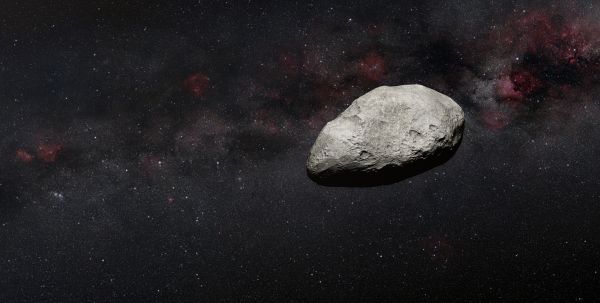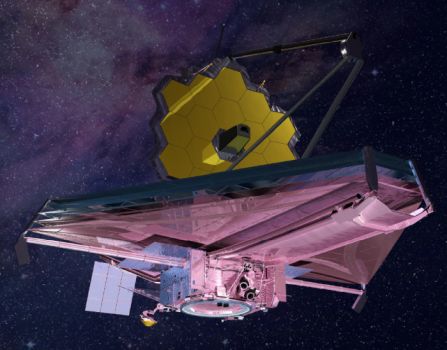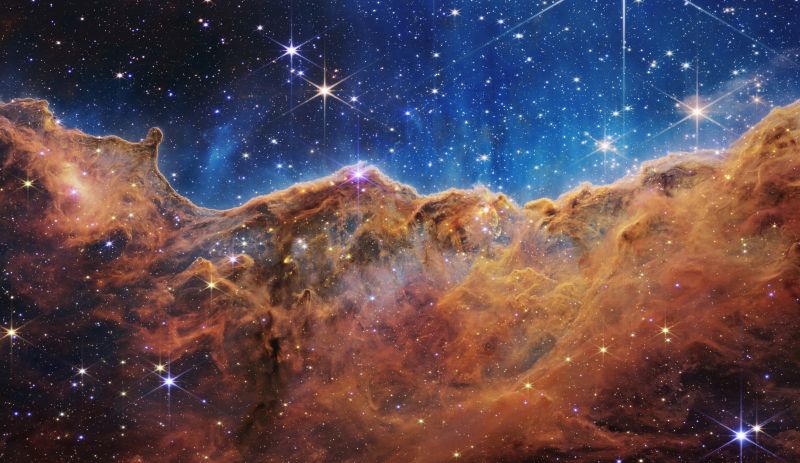
Serendipitous advances of James Webb Telescope now being used to study extremely smaller celestial objects

(Artist illustration of the James Webb Space Telescope, Image credit: NASA)
You’ve probably heard about NASA’s James Webb Space Telescope. Launched into outer space in 2021, it’s the world’s premier space science observatory, initially tasked to study the big things out there – like documenting every phase in the history of our Universe starting with the Big Bang, to the formation of solar systems capable of supporting life on other Earth-like planets, to the evolution of our own Solar System. But now, it’s also showing us some spectacular smaller things that are out there.
Although Webb wasn’t designed to look for smaller objects in our solar system, scientists have been able to adapt the telescope’s inherent mid-Infrared Instrumentation to do just that.
See:
Joe Biden went live to unveil first deep space image from NASA’s Webb Telescope
On February 6, NASA announced that an asteroid roughly the size of one or two football fields – between 300 to 650 feet length – has been detected by an international team of European astronomers using the telescope. Their project used data from the calibration of the Mid-InfraRed Instrument (MIRI), in which the team serendipitously detected an interloping asteroid. The object is likely the smallest observed to date by Webb and may be an example of an object measuring under 0.6 miles (1 kilometer) in length within the main asteroid belt, located between Mars and Jupiter.
NASA stated that more observations are needed to better characterize this object’s nature and properties.
“We – completely unexpectedly – detected a small asteroid in publicly available MIRI calibration observations,” explained Thomas Müller, an astronomer at the Max Planck Institute for Extraterrestrial Physics in Germany. “The measurements are some of the first MIRI measurements targeting the ecliptic plane, and our work suggests that many new objects will be detected with this instrument.”
These Webb observations, published in the journal Astronomy and Astrophysics, were not designed to hunt for new asteroids – in fact, they were calibration images of the main-belt asteroid (10920) 1998 BC1, which astronomers discovered in 1998. The observations were conducted to test the performance of some of MIRI’s filters, but the calibration team considered them to have failed for technical reasons due to the brightness of the target and an offset telescope pointing. Despite this, the data on asteroid 10920 were used by the team to establish and test a new technique to constrain an object’s orbit and to estimate its size.
The validity of the method was demonstrated for asteroid 10920 using the MIRI observations combined with data from ground-based telescopes and ESA’s Gaia mission.
“Our results show that even ‘failed’ Webb observations can be scientifically useful, if you have the right mindset and a little bit of luck,” elaborated Müller. “Our detection lies in the main asteroid belt, but Webb’s incredible sensitivity made it possible to see this roughly 100-meter object at a distance of more than 100 million kilometers.”
The detection of this asteroid – which the team suspects to be the smallest observed to date by Webb and one of the smallest detected in the main belt – would, if confirmed as a new asteroid discovery, have important implications for our understanding of the formation and evolution of the solar system. Current models predict the occurrence of asteroids down to very small sizes, but small asteroids have been studied in less detail than their larger counterparts owing to the difficulty of observing these objects. Future dedicated Webb observations will allow astronomers to study asteroids smaller than 1 kilometer in size.
Researchers believe that being able to find smaller objects will allow Webb to detect new asteroids as they appear.
“This is a fantastic result which highlights the capabilities of MIRI to serendipitously detect a previously undetectable size of asteroid in the main belt,” concluded Bryan Holler, Webb support scientist at the Space Telescope Science Institute in Baltimore, Maryland. “Repeats of these observations are in the process of being scheduled, and we are fully expecting new asteroid interlopers in those images.”
So although the James Webb Telescope will still be looking for the first galaxies that were formed in the early universe – and peer through dusty clouds to see stars forming planetary systems – it will also be able to find much smaller celestial bodies much closer to home.

For more on this ground-breaking discovery and the new and serendipitous use of the stellar James Webb Telescope, see the video accompanying this article.
(Source: JPL / NASA)
Posted by Richard Webster, Ace News Today / Follow Richard on Facebook, Twitter & Instagram






